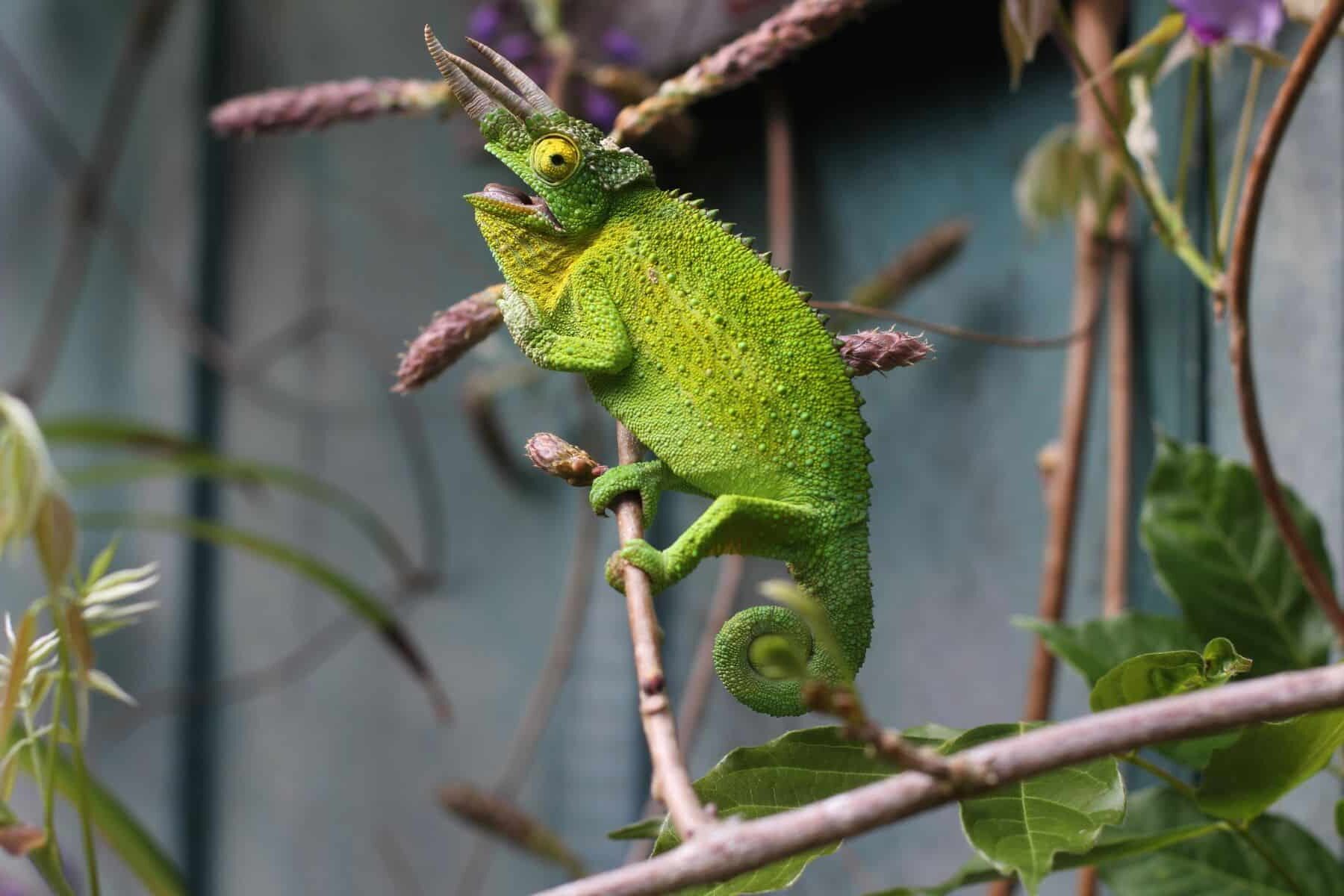He Chameleon is a kind of inverted distribution. It is present in most countries of North Africa, the Central East (Palestine, Lebanon, Syria), the Arabian Peninsula, Continental Greece, Turkey, south of the Iberian Peninsula and on various islands of the Aegean Sea, Malta and Sicily.
Present in Coast zones usually, at low height and on sandy soils. It has few requirements with regard to tree support. It is presented in marginal and demolished areas in Humanized Habitats, coastal areas (SPEER MONOSPERMA) with pine forests, in traditional orchards, gardens of urbanizations and in various crops (almond trees, algurrobes, olive, tropical plants, etc.).
As threat factors, The species is influenced by the destruction or transformation of its natural habitats due to changes in land use and especially urbanization Following unlikely criteria for the maintenance of their population, as well as because of the predation because of pets, roads on roads, illegal human trafficking and direct human persecution.
Chameleon: an endangered species
The Common Chameleon Conservation (‘Chamaeleo Chamaeleon’), which is confronted with threats through urbanization and fragmentation of its habitat And that has his only Spanish population on the Andalusian coast, it receives a new boost in Malaga with the ‘project Chameleon’.
Included in the List of special security types (LSPE) and protected in the Mediterranean Sea area, the subject of a new initiative is aimed at his recoverywho coordinate the University of Malaga (UMA) and Biodiversity Node SL and have the technical cooperation of the Malaga municipal council and the financing of Naturgy, within his biodiversity actions of the combined cycle center of Malaga.
The Improvement of the natural environment through the intervention in habitats and creating adequate spaces For reproduction, in addition to carrying out the reintroduction of samples that have been increased in the recovery center of the Chameleon Usually of the city of Malaga, to strengthen the locals.
There Red Book of Dreinted Wervebrates or Andalusia, with criteria of the International Union of Nature Conservation (IUCN), the Common Chameleon is classified as Minor Risk (LR).
This project proposes a multidisciplinary approach for the recovery and preservation of the species at local levelSupporting and strengthening the actions that have already been developed by the Malaga Consistory in this area via the recovery center, located in the Municipal Animal Protection Center (CEPAM).
About 900 copies have been restored
Since the start of a specific municipal program in 2011, More than 900 copies have already been treated and restored for reintroduction in natural spaces.
The Common Chameleon -Recovered not only contributes to the preservation of a kind, but also strengthens local biodiversity, Improves ecosystem services and promotes environmental consciousness in the community.
Malaga, with its Mediterranean climate and its diversity of habitats, Represents a strategic area for strengthening the populations of this species, according to the promoters of the initiative.
The results of this project will allow it, Moreover, evaluate the reintroduction actions carried out by the recovery center and their incidence on the stability of the populations. An important aspect of the initiative is the application of scientific methods to follow the species.
Microchips mark for monitoring
Population -counts will be carried out in three strategic areas of the municipality and advanced techniques will be used, such as Microchips mark, to evaluate the evolution of liberated chameleons.
Parallel, if will promote the awareness of citizens with educational activities in schools to increase awareness about the importance of this species in the local ecosystem. This project is the result of cooperation between public and private institutions.
The city council, Through the recovery center it brings the experience in preserving the species, While the university leads scientific research, biodiversity junction is responsible for technical implementation and Natury strengthens its dedication to sustainability and integration of biodiversity in its activities. EFE/ECOTICIA.COM

